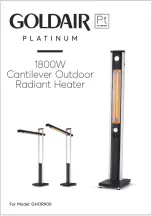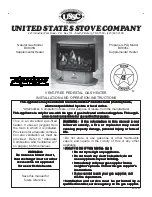
001
83
Loading and Enroute Inspections
This chapter describes pre-loading, post loading, and enroute
inspection procedures. Thermo King refrigeration units are
designed to maintain the required product load temperature
during transit. Follow these recommended loading and enroute
procedures to help minimize temperature related problems.
Pre-Loading Inspection
1.
Pre-cool products before loading. Note any variances on
the manifest.
2.
Inspect door seals and vent doors for condition and a tight
seal with no air leakage.
3.
Inspect the trailer inside and out. Look for:
•
Damaged or loose trailer skin and insulation
•
Damaged walls, air ducts, floor channels or “T”
flooring
•
Clogged defrost drain tubes
•
Blocked return air bulkhead
4.
Verify that the setpoint temperature is correct for your
cargo. Pre-cool the trailer as required.
5.
Push the microprocessor controller access door firmly
closed after setting temperature setpoint
6.
Supervise product loading to ensure sufficient air space
around and through the load. Airflow around the cargo
must not be restricted.
NOTE: If the warehouse is not refrigerated, operate the
unit with doors closed until cargo is ready to be loaded.
Then turn off the unit, open cargo doors and load cargo.
When cargo is loaded, close trailer doors and restart the
unit.
The unit can be operated with the cargo box doors open
if the truck is backed into a refrigerated warehouse and
the dock door seals fit tightly around the trailer.
CAUTION: Push the controller access door firmly
closed after each use. Damage can occur in transit if
the door is not properly closed.
001
83
Loading and Enroute Inspections
This chapter describes pre-loading, post loading, and enroute
inspection procedures. Thermo King refrigeration units are
designed to maintain the required product load temperature
during transit. Follow these recommended loading and enroute
procedures to help minimize temperature related problems.
Pre-Loading Inspection
1.
Pre-cool products before loading. Note any variances on
the manifest.
2.
Inspect door seals and vent doors for condition and a tight
seal with no air leakage.
3.
Inspect the trailer inside and out. Look for:
•
Damaged or loose trailer skin and insulation
•
Damaged walls, air ducts, floor channels or “T”
flooring
•
Clogged defrost drain tubes
•
Blocked return air bulkhead
4.
Verify that the setpoint temperature is correct for your
cargo. Pre-cool the trailer as required.
5.
Push the microprocessor controller access door firmly
closed after setting temperature setpoint
6.
Supervise product loading to ensure sufficient air space
around and through the load. Airflow around the cargo
must not be restricted.
NOTE: If the warehouse is not refrigerated, operate the
unit with doors closed until cargo is ready to be loaded.
Then turn off the unit, open cargo doors and load cargo.
When cargo is loaded, close trailer doors and restart the
unit.
The unit can be operated with the cargo box doors open
if the truck is backed into a refrigerated warehouse and
the dock door seals fit tightly around the trailer.
CAUTION: Push the controller access door firmly
closed after each use. Damage can occur in transit if
the door is not properly closed.
Summary of Contents for SB-200TG
Page 1: ...Operator s Manual SB 200TG Operator s Manual SB 200TG TK 53598 2 OP Rev 0 02 07...
Page 7: ...6 Table of Contents 6...
Page 11: ...10 Introduction 10...
Page 21: ...20 EPA Emission Control System Warranty Statement 20...
Page 43: ...42 TG VI Controller Description 42...
Page 45: ...44 Remote Status Light Optional 44...
Page 83: ...82 Alarm Codes 82...
Page 103: ...102 Warranty 102...
Page 117: ...116 Serial Number Locations 116...
















































